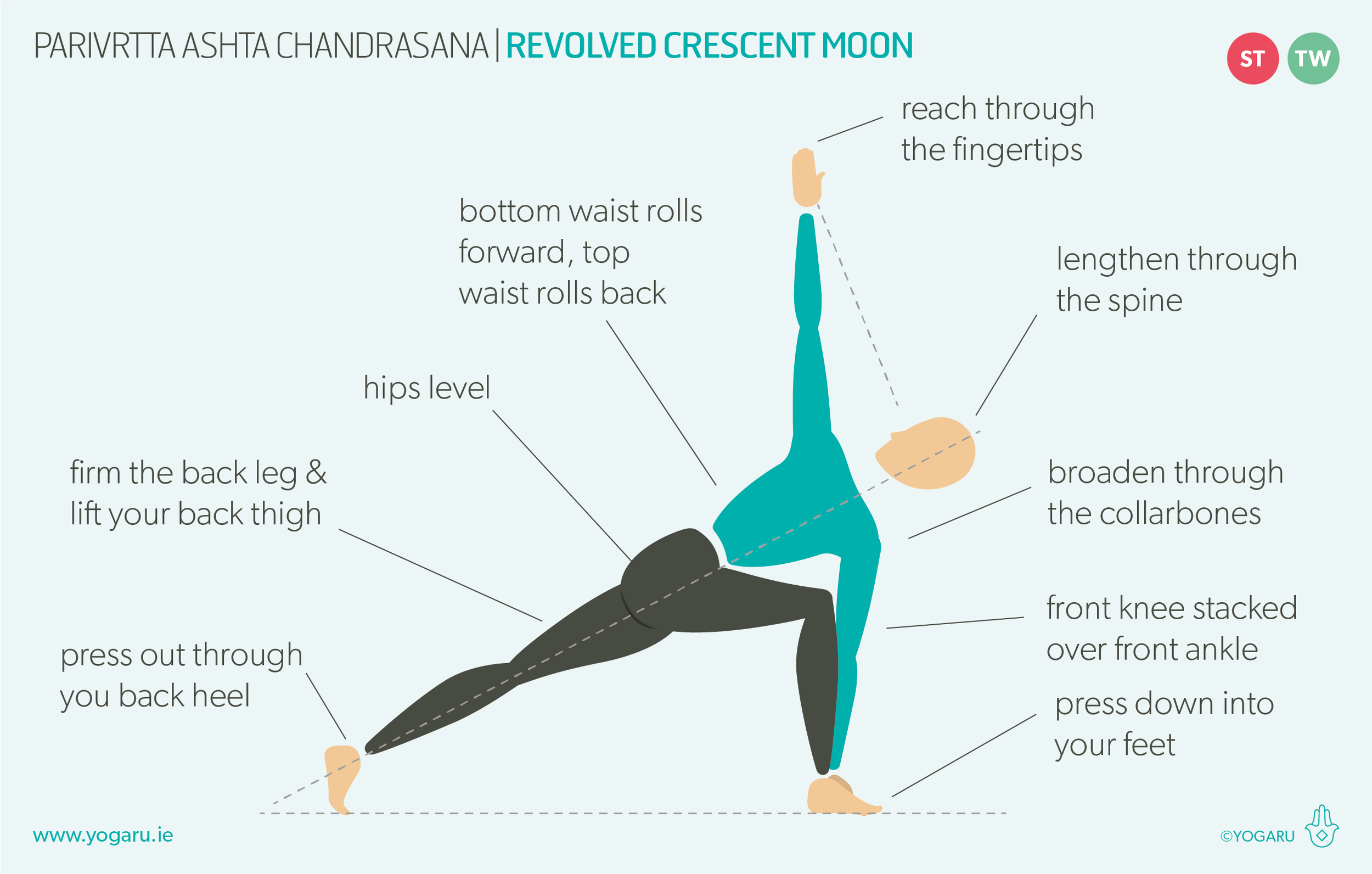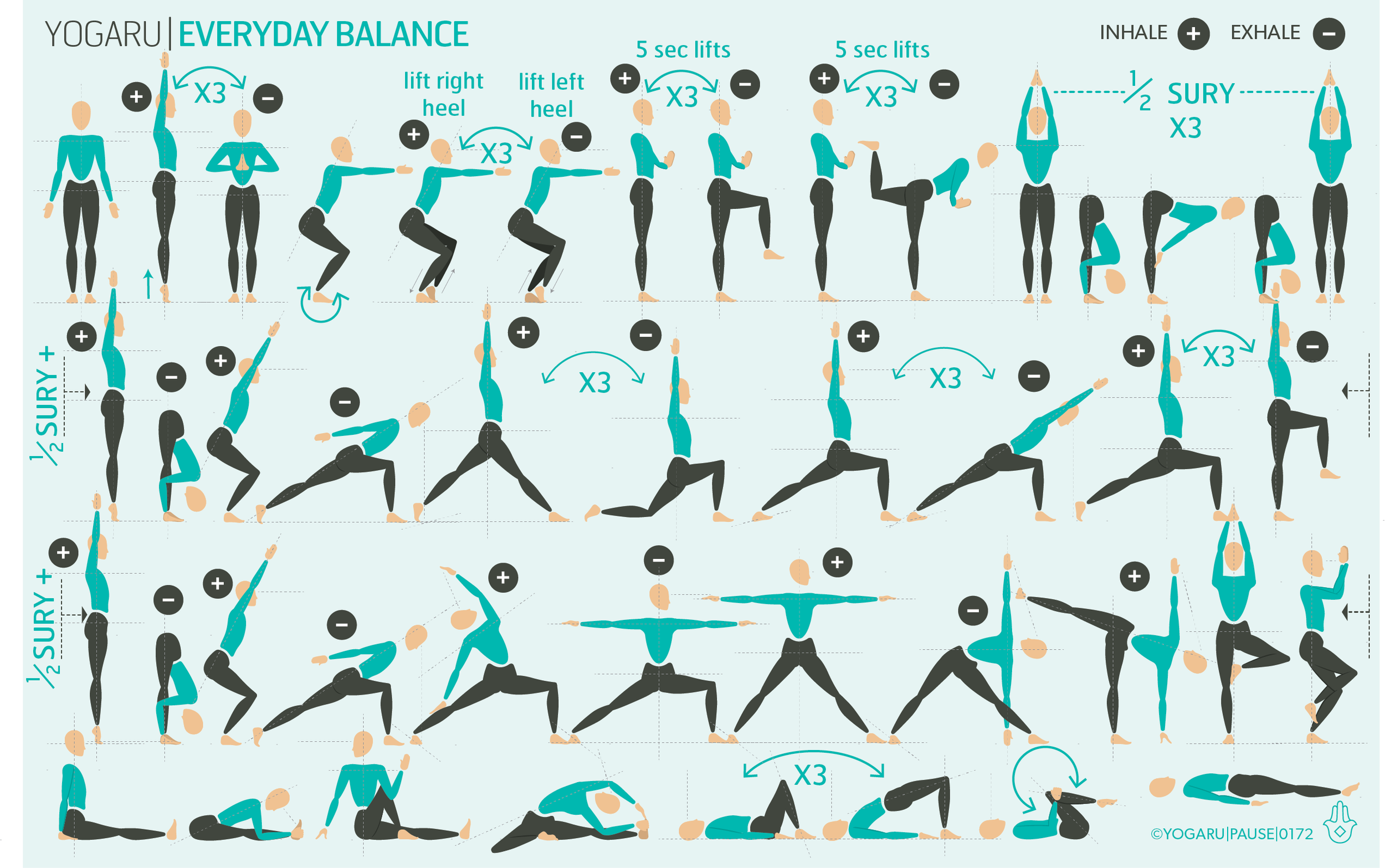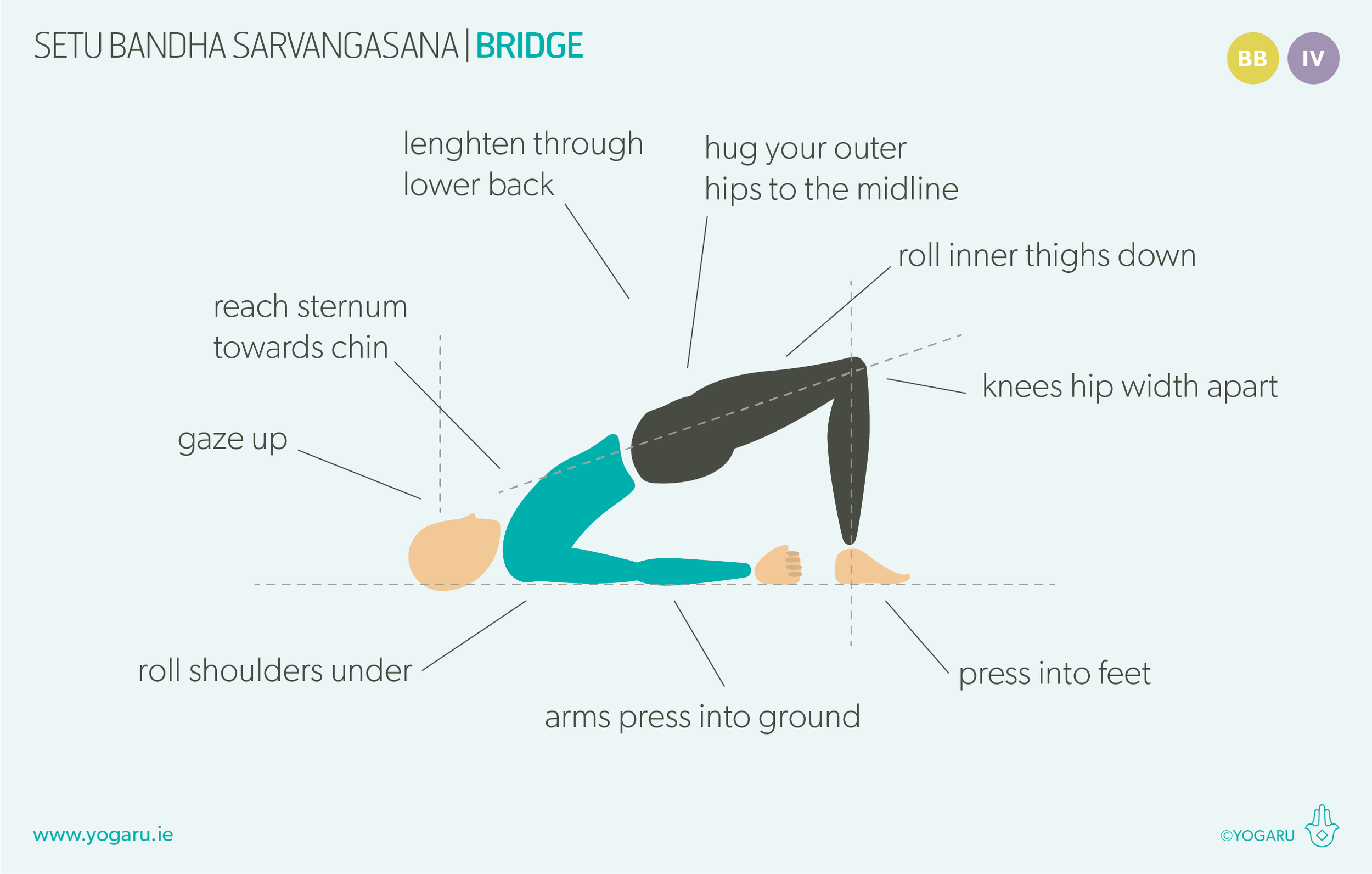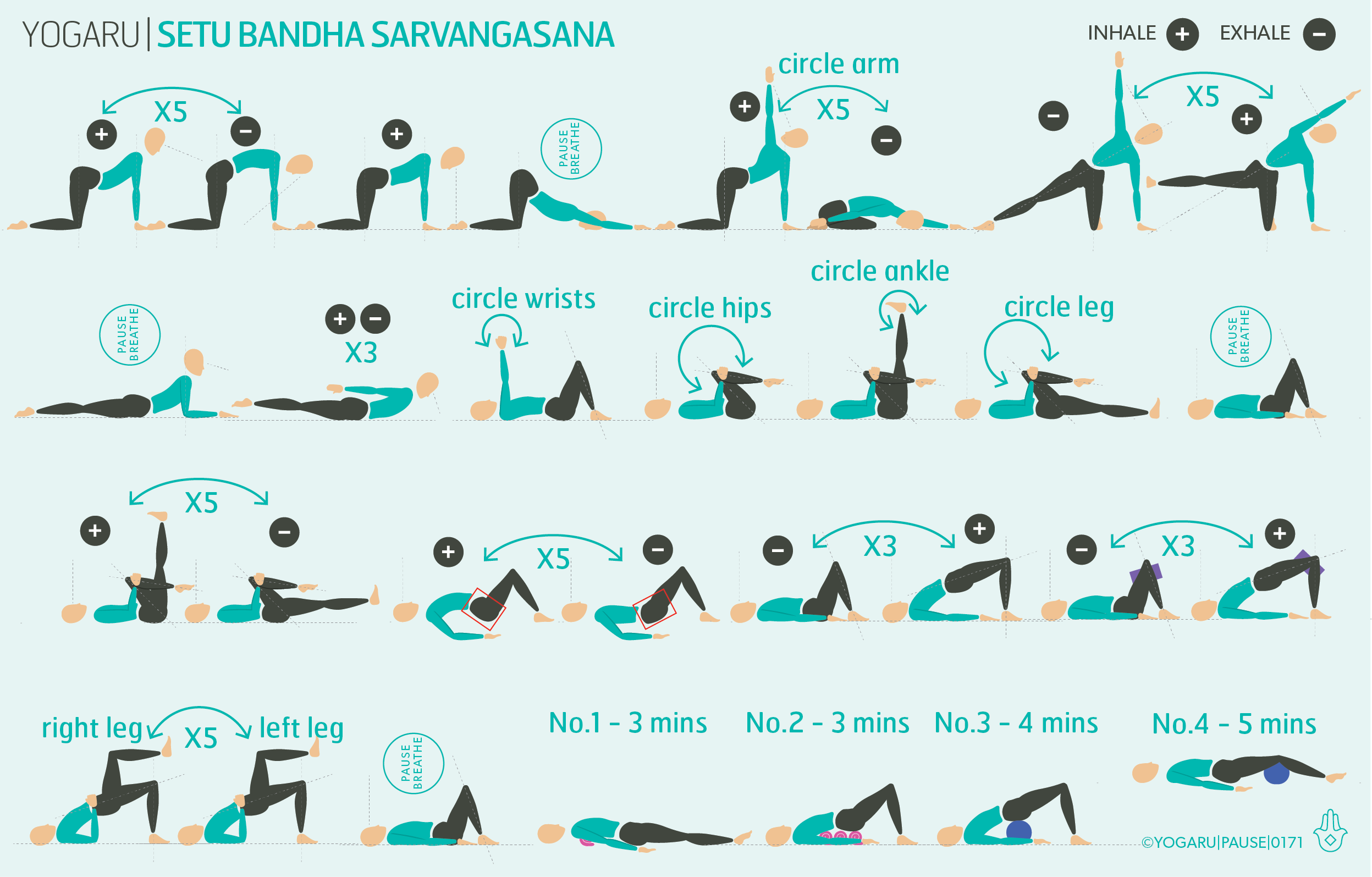PROPPED OR UNPROPPED TWIST
There are lots of great twisted versions of Parivrtta Ashta Chandrasana/Revolved Crescent Moon. In this version you get an extra bit of compression and massage of the organs of the abdominal region with the torso tilted forward. With the lower hand firmly planted on the ground, or a brick, it gives you a surface to press into to facilitate the twist, add the expansion of the top arm. Aided twists, which use the help of the prop of a hand pressing into the ground or an elbow pressing against a knee, help you get a deeper twist that stretches the muscles around the spine and core. Unaided twists, which are twists that work without a prop to facilitate your twist, are more strengthening to the muscles around the spine and core. Parivrtta Ashta Chandrasana/Revolved Crescent Moon is an aided twist. We will look at unaided twists too to give you the opportunity to both stretch and strengthen the area.
When we twist we reach the end of our twist by either the muscles ability to stretch and facilitate the twists or when vertebrae bone hits vertebrae bone. When you are coming into a twist, in this sequence or any time you practise a twist, give your spine its best chance to take the twist by deeply inhaling and lengthen the spine, before you exhale into your twist. This way you are opening the space between the vertebrae to twist with.
THE BENEFITS OF PARIVRTTA ASHTA CHANDRASANA/REVOLVED CRESCENT MOON
Parivrtta Ashta Chandrasana/Revolved Crescent Moon strengthens the spine, arms, shoulders, hip flexors and quads of the front leg, and the glutes of the back leg. It also stretches the hip flexors and quads of the back leg and the glutes of the front leg. As a standing pose it builds focus, heat, stamina and strength; increases energy, circulation and metabolism, and improves posture and coordination. As a twist pose it aids detoxification, digestion, boosts the immune system, and eases constipation, stress tension and anxiety.
Twists massage all the organs of the abdominal region – aiding maximum nutrition absorption in the digestive system and toxin elimination through the bowel and kidneys. When we twist we constrict the blood flow, and in releasing the twist a surge of blood rushes back – bringing with it a fresh supply of oxygen and flushes out toxins. Other than the obvious benefit of the squeeze to the bowels in elimination, it is more the increase in circulation that twists offer that help to clean the system of the body.
EXPLORING PARIVRTTA ASHTA CHANDRASANA/REVOLVED CRESCENT MOON IN YOUR PRACTICE
This sequence gives you plenty of versions of Parivrtta Ashta Chandrasana/Revolved Crescent Moon. You will start preparing for your peak pose in the first line with Parivrtta Utkatasana/Revolved Chair and will continue to capitalise on the work you have put into your twists by exploring some seated twists at the end of your practice.
As with Ashta Chandrasana/Crescent Moon the temptation is to let the hips sink down with gravity in Parivrtta Ashta Chandrasana/Revolved Crescent Moon. This increases your risk of overstretching the muscles around the hip joint. Activating the supporting muscles of the hips, hugging to the midline and keeping the hips level, will give you a more strengthening version of the pose. When we twist in this position there is a natural inclination to allow the hip we are twisting away from to drop down and the hip we are twisting towards to lift up. When you are in your version of the pose, glance at your pointy hip bones and make sure they are still level. You may need to back out of your twist a little to get your hips level again if your twist is pulling your right hip up.
ALIGNMENT CUES
Move slowly through this sequence and give your spine a chance to rejuvenate through the twists and the organs of the body to enjoy the rush of fresh blood as you come out of the twist.
Have a read of the tips below and either print out the sequence or save it onto your device:
From Adho Mukha Svanasana, inhale, step your right foot just inside your right hand, exhale here.
Ground your left hand to the left of your right foot, place your right hand on your right knee.
Inhale, lengthen through the spine, exhale, twist to the right from the waist, reach your right arm up high, palm facing right.
Broaden through the collarbones, stack your shoulders, bottom waist rolls forward, top waist rolls back, gaze to your right or to your right fingertips.
To save the images for personal use click and hold down the image until the ‘save image’ option appears; on Mac hold down ‘control’ and click the image to get the option box; on PC right click on the image to get the option box. Scroll down in the ‘option box’ and click ‘save image’.
Ruth Delahunty Yogaru






